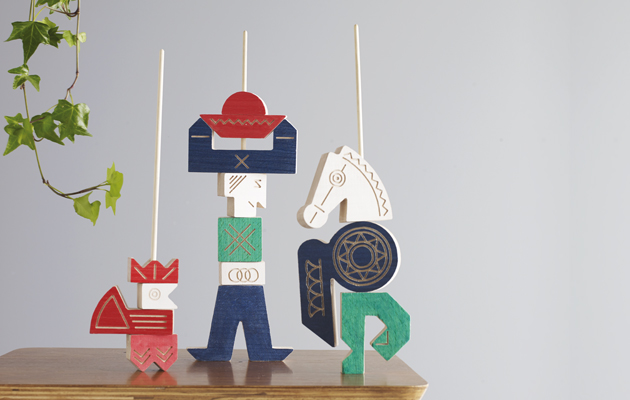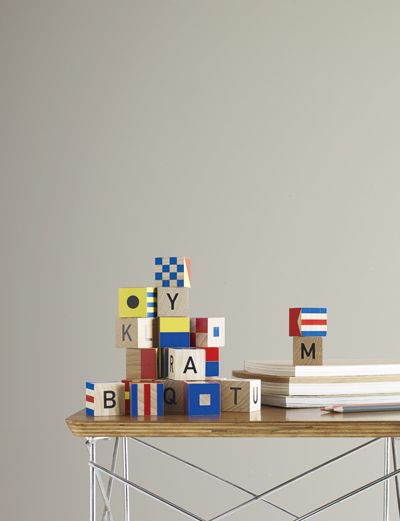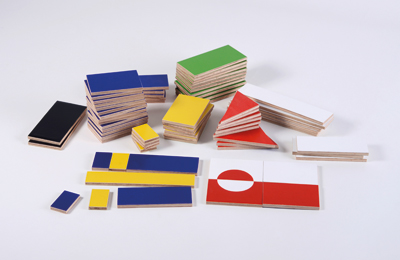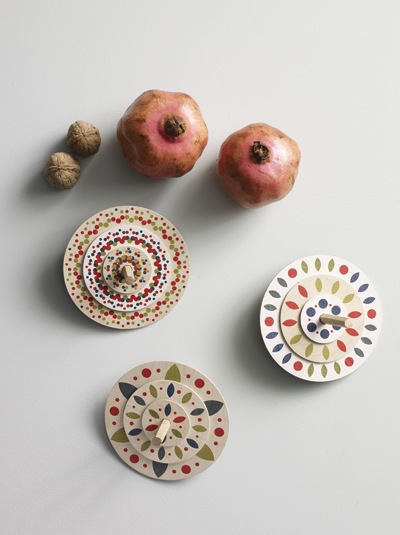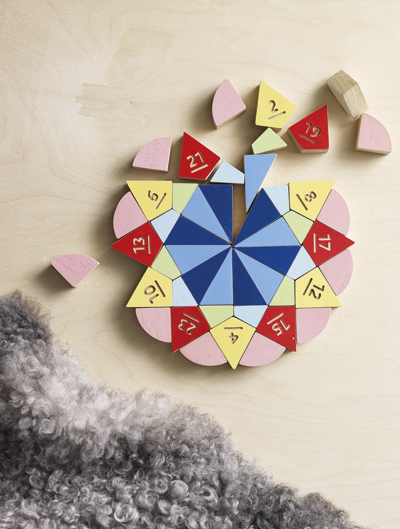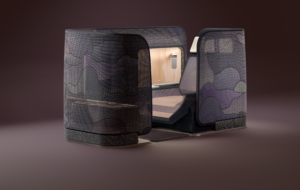|
|
||
|
The Slovakian brand is reviving the country’s long history of toy-making and bringing the joys of hand-crafted games to a new generation. But will 21st-century children embrace analogue play? When Assemble’s Brutalist Playground opened last summer at the RIBA in London, what was striking was the passive, static quality of both the equipment they had built in colourful foam and the concrete originals in housing estates across the country, visible in the photos that accompanied the installation. “There’s this idea now that play equipment has to do something, to perform, whereas these are more sculptural and are completely stationary,” Jane Hall of the architecture collective told Icon at the time. It’s an observation that could also be made about toys. While, historically, items for play have been recognised as an essential component in a child’s development, their form today is increasingly dictated by the marketing budgets of toy companies and movie franchises that see children as an underexploited market. The result is the dominance of toys or games with ready-made, inflexible characters and plot-lines and pathways that leave little room for imagination. It’s a reality that Katarína Trnovská confronted when she tried to buy toys for her own children. “We couldn’t find any interesting toys for our six-year-old son,” says the Bratislava-based curator, design writer and art historian. While Slovakia has a long history of toy-making, the industry faltered in the mid-20th century when its artisans were forced to compete with the more advanced manufacturing techniques of their Czech counterparts. Then it more or less vanished after the break-up of Czechoslovakia in 1993, when mass-produced toys flooded in from further afield. Today, Trnovská says, it is a challenge to buy any toys by Slovak designers. “The idea of establishing our own brand came quite naturally,” she adds.
Igor Marko’s Ahoy (2014) depicts the international maritime signalling flag system That brand, Hravo, began with just one product: their son was interested in flags, so in 2013 Trnovská’s architect husband Karol used this as a starting point to create a puzzle comprising identically shaped plywood tiles decorated with the basic elements that make up flags of various countries; the pieces can be mixed and matched to compose existing or imagined flags. Trnovská approached other designers and worked with them to develop four additional designs – two were launched the same year and two in 2014. The result is a wooden collection that combines the functionality and materiality of designs by mid-century European modernists, such as western Bohemian graphic designer Ladislav Sutnar and the Bauhaus’s Alma Siedhoff-Buscher, with contemporary manufacturing and design techniques, such as digital printing and CNC milling, rather than traditional woodworking. With simple shapes and colours and a clear purpose, they strive to develop children’s imagination and their emotional, analytical, intellectual, motor and memory skills. Hravo presented the prototypes at an exhibition and tested them on 200 children between the ages of four and ten – as well as their parents. “They were very well received,” says Michala Lipková, who designed one of the collections. “We found that people were hungry for something like this – parents were reminded of toys they played with when they were young, which you can’t really get today.” This quite neatly sums up the objectives of Hravo (Slovak for “playfully”). Its aim is twofold: first, to foster a contemporary version of the historic Slovakian toy industry, which began in the late 19th century; second, to develop a range of toys that have educational value and encourage children’s creativity. “Most toys today are very straightforward,” says product designer Lipková. Each Hravo toy, she says, has a deeper story – a link to the past, a foot in the present and a pedagogic function.
Karol Trnovský’s Flags (2013) will be the first design manufactured Flags, for example, could be used in schools to teach geography, while Star of Time by Ondrej Gavalda and Viktória Gavaldová is a mosaic that illustrates simple mathematical principles. Product designer Lipková’s Puppet Play, inspired by the toys traditionally made in Slovakia’s Kyjatice region, is designed to encourage communication and imagination in both conventional settings and in psychotherapy. The ornamentation, colours and format are reminiscent of the original designs, but Lipková’s versions have the capacity for movement and customisation, allowing children to tell their own tales. “Roleplaying helps children understand their world, their relationships, social rules, family life,” she says. “It also gives the child the chance to express their inner stories and bring them on the ‘stage’. Since the toy is modular, the child can make their own puppet, which is a way to externalise feelings.” Architect Igor Marko’s Ahoy is a set of 25 wooden cubes, each of which features a flag from the international maritime signalling system and a letter – both of which correspond to a meaning (the flag associated with “O”, for example, means “man overboard”). The game involves guessing the words your opponent is composing using the symbols, testing memory and helping to teach children the alphabet. “These toys are very analogue and unlike games in digital form, you can touch and feel it,” says Marko. “Mine also works spatially, which is perhaps how it connects to my work in architecture.”
The patterns on Ján Šicko’s Vrk (2014) were generated by an algorithm Ján Šicko also drew on his specialisation – as a graphic designer – to create his toy, Vrk, which comprises six different patterned discs that spin around vertical axes. Derived from Slovakian folk costumes, but designed using an algorithm and digitally printed, the pattern appears to change in shape and shade as the speed of rotation varies. “Kids can try to throttle its speed using their fingers or try to keep it spinning for as long as possible,” he says. When Icon spoke to Trnovská and Lipková, they were about to launch a crowdfunding campaign to allow them to manufacture Flags, which proved during testing to be the most popular design. If successful, they hope to start production in early 2016. While commercial viability and the need to think beyond the small Slovak market were considerations from early on, Trnovská sees Hravo less as a brand but as a “creative laboratory”. “As curators we were interested in testing the potential of a variety of creative approaches, which is why we’ve collaborated not just with product designers but also with architects, graphic designers and visual artists,” she explains. “In the design process, the experience gained from completing tasks in two dimensions and complex residential or urban structures is mixed with the experience of designing and manufacturing 3D objects.”
Star of Time (2013) by Ondrej Gavalda and Viktória Gavaldová helps develop maths skills This approach is not without precedent: Ladislav Sutnar, whose toys are now in MoMA’s permanent collection, was a graphic designer, and Bauhaus designers applied graphic design and architectural principles to toy design. But the multi-disciplinary, collaborative approach is about more than the physical outcome, says Lipková. She believes that an alternative, more participatory model of product design – similar to those of craft traditions – could breathe new life into Slovakia’s indigenous creative sector. “Our regional production is facing significant lack of self-confidence,” she says. “I believe that craft as a social phenomenon has the potential to play an important role in Slovakia’s creative industry in the near future.” With the rise in the maker movement and an increasing interest in the handmade and artisanal in Europe and across much of the US, it is perhaps surprising that the market in wooden toys has not seen a significant revival. Indeed, as Tibor Uhrin – one of the few successful contemporary Slovak toy designers – observed in a recent blog post, over the past 20 years there has been an unmistakable slump in wooden toys at the Nuremberg Toy Fair, the most important for the industry. “In the 1990s we often heard about the ‘Renaissance’ of wooden toys,” he wrote, “but this was never true and we can’t speak about this even today.” It is perhaps because, like the modernist dolls houses now available – miniature versions of Arne Jacobsen and Mies van der Rohe homes – their primary target is design-conscious, nostalgic parents, rather than their children. Marko, who designed his Ahoy series to appeal to adults as well as children, echoes this sentiment: “I’m pretty sure the people who buy these things will probably be designers, which makes it difficult from a commercial perspective. But there are a lot of people who are quite influential in the creative sector, so there could be an effect we can’t predict – it could become a fashion.” |
Words Debika Ray
Photography Ania Wawrzkowicz
Above: Michala Lipková’s Puppet Play (2013) is designed to encourage roleplay |
|
|
||

